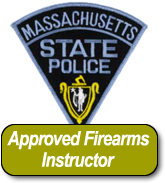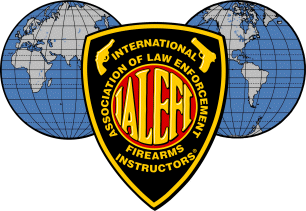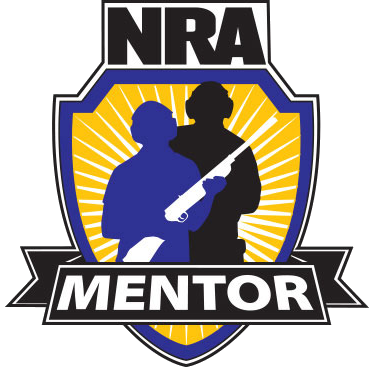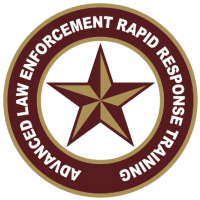NRA & SAFTEA Firearm Instructor Classes
 Thank you for your interest in the NRA Instructor Training Program. The goal of this program is to develop instructors to teach NRA Basic Firearm Training Courses according to the lesson plans and training standards of the National Rifle Association. This program is not designed to prepare you to teach other firearm training courses (such as law enforcement, security, or hunter safety courses), nor to prepare you to develop firearm training courses of your own.
Thank you for your interest in the NRA Instructor Training Program. The goal of this program is to develop instructors to teach NRA Basic Firearm Training Courses according to the lesson plans and training standards of the National Rifle Association. This program is not designed to prepare you to teach other firearm training courses (such as law enforcement, security, or hunter safety courses), nor to prepare you to develop firearm training courses of your own.
The NRA Instructor Training Course is designed to teach you how to teach others to shoot using NRA lesson plans and training methods. The course is not designed to improve your shooting skills. Possession of basic firearm safety and/or shooting skills is a prerequisite for certification as an NRA instructor. You may be asked to demonstrate your firearm background through participation in pre-course assessment exercises. We highly suggest enrolling in the student level course before instructor training even when it is not a prerequisite.
A complete NRA Instructor Training Course consists of two parts. The first is basic instructor training, which consists of 6 hours of instruction. The second part is discipline-specific instructor training, which consists of an additional 5 to 14 hours of instruction per discipline. For example, an NRA Instructor Training Course in rifle, pistol, and shotgun lasts at least 40 hours.
During the NRA Instructor Training Course, you will receive from your Training Counselor the NRA Trainer’s Guide, the appropriate NRA Instructor Candidate Packet which includes the course outlines and lesson plans for the disciplines you wish to teach, the appropriate NRA basic course student packet which includes the handbook, certificates, NRA Gun Safety Rules brochure and other materials used in NRA basic courses.
The NRA Training Counselor who conducts your course will make a recommendation to NRA concerning your certification based on an evaluation of your knowledge, skills, and attitude. You will be asked to demonstrate your organizational and teaching skills through participation in several practical exercises during the course of your training. You will also be asked to complete an instructor certification examination. A minimum score of 90 percent is required for certified instructor applicants (85 percent for assistant and apprentice instructor applicants). However, attendance at the course, or a passing grade on the examination, does not guarantee that you will receive the recommendation of the NRA Training Counselor.
Instructor certification is valid for one year upon initial certification. After completion of the first year, instructors may renew their instructor credentials for up to three years at a time. NRA encourages instructors to remain active and would like to see at least one basic course taught per year.
Please remember NRA Instructor Courses are performance based courses, Instructor Candidates must possess the knowledge, skills and attitude necessary for this level of training. You do not pay and automatically pass Instructor training. You pay to have the opportunity to pass.
NRA Basic Instructor Training (BIT)
 NRA Basic Instructor Training is designed to develop NRA Certified Instructors who possess the knowledge, skills, and attitude necessary to conduct the NRA Basic Firearm Training Courses. It is the NRA class that helps people who already have subject matter expertise learn how to hold a class the NRA way so that their students earn recognized NRA certification.
NRA Basic Instructor Training is designed to develop NRA Certified Instructors who possess the knowledge, skills, and attitude necessary to conduct the NRA Basic Firearm Training Courses. It is the NRA class that helps people who already have subject matter expertise learn how to hold a class the NRA way so that their students earn recognized NRA certification.
This course teaches you the policies and procedures for becoming an NRA instructor as well as effective teaching methods for training students. Basic Instructor Training is a pre-requisite for all instructor level courses.
NRA Basic Instructor Training opens with an exercise on "How to Introduce a Speaker" designed as an icebreaker. You're paired with another Instructor Candidate, spend a few minutes in exchanging information, and introduce each other to the class. Immediately you start learning how to talk on your feet while we teach you how to offer useful praise and constructive suggestions. We help you conquer shyness and develop a communications bridge with a group of people who depend on you for positive instruction. Our classes establish an atmosphere in which your fellow students assist us in helping you succeed.
All courses include the required NRA documentation, instructor guides, student packets, instruction and follow up support. You will receive everything needed to first take and then teach each course. Note: There will be processing fees payable to the NRA due upon the completion of class. Fee's are determined by how many and which courses you attend.
This course is a minimum of 6 hours and covers the following topics:
- How to introduce a speaker
- The instructor and the NRA Basic Firearm Training Program
- Using a training team
- Training materials and training aids
- Organizing your course
- Preparing to teach
This course is the mandatory pre-requisite for initial NRA Certified Instructor training.
To be certified as an NRA Instructor, students must complete this 6-hour course that teaches material common to all NRA courses. This course does not certify the instructor candidate to teach any NRA courses. Additional discipline-specific instructor training is required to certify instructor candidates to teach specific courses.
After you successfully complete NRA Basic Instructor Training and score at least 90% on the Trainers Examination you should be ready for whichever discipline-specific instructor training class comes next for you: Pistol, Rifle, Shotgun, or Personal Protection depending on your qualifications and enrollment. You demonstrate your qualifications through the Pre-Course Qualification tests associated with the specific discipline.
The first day of most NRA instructor training courses consists of this 6 hour Basic Instructor Training (BIT).
Special Note for Current Instructors adding a rating: When adding ratings, instructors may be required to attend another Basic Instructor Training (BIT) Course if they have not completed that course within the previous 2 years.

NRA Basic Pistol Instructor Course
This course is at least 10 hours long and includes classroom and range time learning how to teach shooting revolvers and semi-automatic pistols. Instructor Candidates learn how to teach NRA’s rules for safe gun handling; pistol parts and operation; ammunition; shooting fundamentals; range rules; shooting from the bench rest position, and two handed standing positions; cleaning the pistol; and continued opportunities for skill development. Students will receive the NRA Guide to the Basics of Pistol Shooting handbook, Instructor Manual, NRA Gun Safety Rules brochure, Winchester/NRA Marksmanship Qualification booklet, take a Basics of Pistol Instructor Shooting Examination, and course completion certificate.
In order to take this course you must pass the prequalification test which includes firearms safety, shooting evaluation etc or take the NRA Basic Pistol Course. You also must have had Basic Instructor Training within the last 2 years if the BIT is not included in this course.
Download the Pre-Course Qualification here! Pistol_Prequal.pdf
Download the Pre-Course Questionnaire Here! PreCourse-Questionnaire.pdf
Please download and read our Liability_Waiver.pdf
NRA Personal Protection In The Home Instructor Course
 Instructor Candidates should expect to shoot approximately 100 rounds of ammunition. Instructor Candidates will learn how to teach the basic defensive shooting skills, strategies for home safety and responding to a violent confrontation, firearms and the law, how to choose a handgun for self-defense, and continued opportunities for skill development. Instructor Candidates will receive the NRA Personal Protection in the Home Instructor Manual, NRA Guide to the Basics of Personal Protection In The Home handbook, NRA Gun Safety Rules brochure, the Winchester/NRA Marksmanship Qualification booklet, and course completion certificate.
Instructor Candidates should expect to shoot approximately 100 rounds of ammunition. Instructor Candidates will learn how to teach the basic defensive shooting skills, strategies for home safety and responding to a violent confrontation, firearms and the law, how to choose a handgun for self-defense, and continued opportunities for skill development. Instructor Candidates will receive the NRA Personal Protection in the Home Instructor Manual, NRA Guide to the Basics of Personal Protection In The Home handbook, NRA Gun Safety Rules brochure, the Winchester/NRA Marksmanship Qualification booklet, and course completion certificate.
NRA Basic Personal Protection In The Home Instructor course is for law-abiding adult citizens, as defined by applicable federal, state, or local law, and experienced shooters (shooters able to show mastery of the basic skills of safe gun handling, shooting a group, zeroing the firearm, and cleaning the firearm) to maximize what can be learned from this course.
**This is a 2-Day Course** You must have completed and be Certified to teach NRA Basic Pistol course along with having successfully completed the Personal Protection in The Home Student Course and pass the prequalification test in order to take this Certification Course. You also must have had Basic Instructor Training within the last 2 years if the BIT is not included in this course.
Download the Pre-Course Qualification here! PPIH-Prequal.pdf
Download the Pre-Course Questionnaire Here! PreCourse-Questionnaire.pdf
Please download and read our Liability_Waiver.pdf
NRA Personal Protection Outside The Home Instructor Course
 The course teaches Instructor Candidates how to teach the knowledge, skills and attitude essential for avoiding dangerous confrontations and for the safe, effective and responsible use of a concealed pistol for self-defense outside the home. Instructor Candidates have the opportunity to attend this course using a quality strong side hip holster that covers the trigger, or a holster purse. From a review of safe firearms handling and proper mindset to presentation from concealment and multiple shooting positions, this course contains the essential skills and techniques needed to taech students to prevail in a life-threatening situation.
The course teaches Instructor Candidates how to teach the knowledge, skills and attitude essential for avoiding dangerous confrontations and for the safe, effective and responsible use of a concealed pistol for self-defense outside the home. Instructor Candidates have the opportunity to attend this course using a quality strong side hip holster that covers the trigger, or a holster purse. From a review of safe firearms handling and proper mindset to presentation from concealment and multiple shooting positions, this course contains the essential skills and techniques needed to taech students to prevail in a life-threatening situation.
The NRA Personal Protection Outside the Home Instructor Course is divided into two levels (basic and advanced). Level one offers the essential knowledge and skills that must be mastered in order to carry, store, and use a firearm safely and effectively for personal protection outside the home. Upon completion of level one, Instructor Candidates will attend level two, which is additional range training and teaches how to teach advanced shooting skills. After the classroom portion, Instructor Candidates should expect to spend several hours on the range during level one. Level two involves additional hours on the range and approximately 200 rounds of ammunition. The ammunition requirements are minimum and may be exceeded. Instructor Candidates will receive the NRA Personal Protection outside the Home Instructor Manual & CD, NRA Guide to the Basics of Personal Protection Outside The Home handbook, NRA Gun Safety Rules brochure and the appropriate course completion card.
The NRA Basics of Personal Protection Outside The Home Instructor Course is for adult individuals who are not disqualified from possessing a firearm as defined by applicable federal, state, or local law and are of good repute and possess defensive pistol skills.
Equipment:
- Ear and Eye protection (electronic muffs preferred)
- Suitable Holster that protects the trigger. No pocket guns or holsters.
- Concealment garment, light jacket or vest.
- Shoes – comfortable with sufficient support to permit a full range of motion. No sandals or flip-flops.
- Semi-Automatic Pistol or Revolver with at least 200 rounds of factory ammunition. NO RELOADS
- At least two functional magazines (semi-autos) or speed-loaders (revolvers)
- Comfortable clothing, knee-pads (optional) and foot wear suitable for training outdoors.
**This is a 2-Day Course** You must have completed and be Certified to teach NRA Basic Pistol and Personal Protection in the Home course along with having successfully completed the Personal Protection Outside The Home Student Course and pass the prequalification test in order to take this Certification Course. You also must have had Basic Instructor Training within the last 2 years if the BIT is not included in this course. Note: any Instructor Candidate that points a firearm in an unsafe direction or swipes another student either intentionally or unintentionally will automatically fail and be asked to leave (with no refund given).
Download the Pre-Course Questionnaire Here! PreCourse-Questionnaire.pdf
Please download and read our Liability_Waiver.pdf
 NRA Basic Rifle Instructor Course
NRA Basic Rifle Instructor Course
This course includes classroom and range time learning to how to teach the sport of shooting rifles. Instructor Candidates learn how to teach the NRA’s rules for safe gun handling; rifle parts and operation; ammunition; shooting fundamentals; range rules; shooting from the bench rest, prone, sitting, standing and kneeling positions; cleaning, and continued opportunities for skill development. Instructor Candidates will receive the NRA Basic Rifle Instructor Manual & CD, Basics of Rifle Shooting handbook, NRA Gun Safety Rules brochure, Winchester/NRA Marksmanship Qualification booklet, take a Basics of Rifle Shooting Instructor Examination, and course completion card.
In order to take this course you must pass the prequalification test which includes firearms safety, shooting evaluation etc. You also must have had Basic Instructor Training within the last 2 years if the BIT is not included in this course. Note: any Instructor Candidate that points a firearm in an unsafe direction or swipes another student either intentionally or unintentionally will automatically fail and be asked to leave (with no refund given).
Download the Pre-Course Qualification here! RiflePreQual.pdf
Download the Pre-Course Questionnaire Here! PreCourse-Questionnaire.pdf
Please download and read our Liability_Waiver.pdf
 NRA Home Firearm Safety Instructor
NRA Home Firearm Safety Instructor
Non-shooting course and teaches Instructor Candidates how to teach the basic knowledge, skills, and to explain the attitude necessary for the safe handling and storage of firearms and ammunition in the home.
This for safe gun handling is conducted in the classroom only. Instructor Candidates are taught how to teach the NRA’s three rules for safe gun handling; primary causes of firearms accidents; firearm parts; how to unload certain action types; ammunition components; cleaning; care; safe storage of firearms in the home; and the benefits of becoming an active participant in the shooting sports. Instructor Candidates will receive the NRA Home Firearm Safety Instructor Manual & CD, NRA Home Firearm Safety handbook, NRA Gun Safety Rules brochure, Basic Firearm Training Program brochure, course completion certificate.
In order to take this course you must pass the prequalification test which includes firearms safety, shooting evaluation etc. You also must have had Basic Instructor Training within the last 2 years if the BIT is not included in this course.
Download the Pre-Course Qualification here! HomeFirearmSafetyPrequal.pdf
Download the Pre-Course Questionnaire Here! PreCourse-Questionnaire.pdf
Please download and read our Liability_Waiver.pdf
 NRA Chief Range Safety Officer Course
NRA Chief Range Safety Officer Course
This course is conducted in a classroom and may include a Range facility. NRA Chief Range Safety Officer candidates will learn how to teach the roles and responsibilities of an RSO; Range Standard Operating Procedures (SOPs); range inspection; range rules; range briefings; emergency procedures; and firearm stoppages and malfunctions. Each Chief Range Safety Officer Candidate will receive a Chief RSO Instructor Manual, an RSO Student Manual, Basic Firearm Training Program brochure, an NRA Gun Safety Rules brochure, an Instructor Application/Course Evaluation form.
Chief Range Safety Office is an Instructor rating, so you must be a current certified NRA Range Safety Officer and must have had Basic Instructor Training within the last 2 years if the BIT is not included in this course.
Download the Pre-Course Questionnaire Here! PreCourse-Questionnaire.pdf
Please download and read our Liability_Waiver.pdf
NRA Basic Shotgun Instructor
 The NRA Shotgun Instructor Training class is designed to develop NRA Certified Instructors who possess the knowledge, skills, and attitude necessary to conduct the NRA Basic Shotgun Shooting Course. NRA Shotgun Instructor Training begins with the NRA Basic Instructor Training class, which must be completed first. Both classes together form the required course for NRA Shotgun Instructor certification. (You are not considered an NRA Certified Instructor until the NRA Training Department processes your application and issues your instructor credentials.) This is an 11 hour course designed to teach the fundamentals of shotgun shooting, both hunting and skeet/trap for shotgun.
The NRA Shotgun Instructor Training class is designed to develop NRA Certified Instructors who possess the knowledge, skills, and attitude necessary to conduct the NRA Basic Shotgun Shooting Course. NRA Shotgun Instructor Training begins with the NRA Basic Instructor Training class, which must be completed first. Both classes together form the required course for NRA Shotgun Instructor certification. (You are not considered an NRA Certified Instructor until the NRA Training Department processes your application and issues your instructor credentials.) This is an 11 hour course designed to teach the fundamentals of shotgun shooting, both hunting and skeet/trap for shotgun.
Prerequisites
To enroll in the NRA Shotgun Instructor Training class you must:
- Complete our NRA Basic Instructor Training class
- Fill out the NRA Pre-Course Questionnaire, and deposit as listed on the class page.
- Achieve satisfactory scores in an NRA Pre-Course Qualification that we conduct for promising potential Instructor candidates.
- In your Pre-Course Qualification you must: achieve a score of 90 percent or higher in a written examination and have a minimum passing score of 80 out of a possible 100 points in firearms handling, shooting competence, and firearms safety evaluation.
The NRA states that "Only those candidates who achieve satisfactory scores in the pre-course qualification, and who meet other specified requirements for NRA instructors, are eligible for certification."
All NRA instructor training is a two-part course consisting of two classes. The NRA Basic Instructor Training class is the first part of that course and is Lessons I-V. The discipline-specific class is the second part of that course and always begins with Lesson VI.
Class Description
This NRA Shotgun Instructor Training class proceeds through eight lessons that teach you how to conduct the NRA Basic Shotgun Shooting course step by step using the NRA Basic Shotgun Shooting Course Outline and Lesson Plans, and how to teach shotgun shooting on a basic level. NRA Shotgun Instructor Training concludes with the Shotgunl Instructor Examination and other preliminaries to certification by the NRA.
Here are the eight lessons in an NRA Shotgun Instructor Training class:
VI. Introduction to "NRA Basic Shotgun Shooting Course Outline and Lesson Plans"
VII. Teaching "Shotgun Lesson I: Shotgun Knowledge and Safe Handling"
VIII. Teaching "Shotgun Lesson II: Ammunition Knowledge and the Fundamentals of Shotgun Shooting"
IX. Basic Shotgun Shooting Instructional Method
X. Teaching "Shotgun Lesson III: Firing the First Shots"
XI. Teaching "Shotgun Lesson IV: Shotgun Shooting Skills Practical Exercise"
XII. Evaluating and Improving Performance of Beginning Shotgun Shooters
XIII. Teaching "Shotgun Lesson V: Shotgun Sports and Activities"
NRA Refuse to be a Victim Development Workshop
 Joining the Refuse To Be A Victim® Instructing team is easy! Teach your community how to better protect themselves, their family, and their friends.
Joining the Refuse To Be A Victim® Instructing team is easy! Teach your community how to better protect themselves, their family, and their friends.
Women and men interested in becoming Refuse To Be A Victim® instructors must attend a one- to two-day Instructor Development Workshop (IDW) or complete the Online Instructor Training course.
Instructor Development Workshops are taught by Regional Counselors and begin with a Refuse To Be A Victim® Seminar. The workshop then concentrates on technical aspects of the program, instructor expectations, certification guidelines, developing speaking techniques and presentation skills, marketing seminars, etc.
After completing an Instructor Development Workshop and receiving the Regional Counselor's endorsement, the required paperwork and fees are submitted to NRA and instructor credentials are issued.
Once certified, instructors are encouraged to schedule seminars in their communities for organizations, community groups, and companies, both proactively and in response to direct requests.
Refuse To Be A Victim® uses www.nrainstructors.org for all Instructor Development Workshop schedules and information.
NRA Basic Metallic Cartridge Reloading Instructor Course
 The goal of the NRA's Basic Metallic Cartridge Reloading Instructor Course is to develop NRA Certified Instructors who possess the knowledge, skill, and attitude necessary to conduct the NRA Basic Metallic Cartridge Reloading Course.
The goal of the NRA's Basic Metallic Cartridge Reloading Instructor Course is to develop NRA Certified Instructors who possess the knowledge, skill, and attitude necessary to conduct the NRA Basic Metallic Cartridge Reloading Course.
Lessons include:
• Introduction to NRA Basic Metallic Cartridge Reloading Course Outline and Lesson Plans
• Teaching Lesson I: Introduction to Reloading and Reloading Safety
• Teaching Lesson II: Centerfire Cartridge Components
• Teaching Lesson III: Using the Reloading Manual and Reloading Data
• Teaching Lesson IV: Metallic Cartridge Reloading Equipment
• Teaching Lesson V: Making the First Metallic Cartridges
• Teaching Lesson VI: Course Review and Examination
NRA Basic Shotgun Shell Reloading Instructor Course
 The goal of the NRA's Basic Shotgun Shell Reloading Instructor Course is to develop NRA Certified Instructors who possess the knowledge, skill, and attitude necessary to conduct the NRA Basic Shotgun Shell Reloading Course.
The goal of the NRA's Basic Shotgun Shell Reloading Instructor Course is to develop NRA Certified Instructors who possess the knowledge, skill, and attitude necessary to conduct the NRA Basic Shotgun Shell Reloading Course.
Lessons include:
• Introduction to NRA Basic Shotgun Shell Reloading Course Outline and Lesson Plans
• Teaching Lesson I: Introduction to Reloading and Reloading Safety
• Teaching Lesson II: Shotgun Shell Components
• Teaching Lesson III: Using the Reloading Manual and Reloading Data
• Teaching Lesson IV: Shotgun Shell Reloading Equipment
• Teaching Lesson V: Making the First Shotgun Shells
• Teaching Lesson VII: Course Review and Examination
Please remember NRA Instructor Courses are performance based courses, Instructor Candidates must possess the knowledge, skills and attitude necessary for this level of training. You do not pay and automatically pass Instructor training. You pay to have the opportunity to pass.
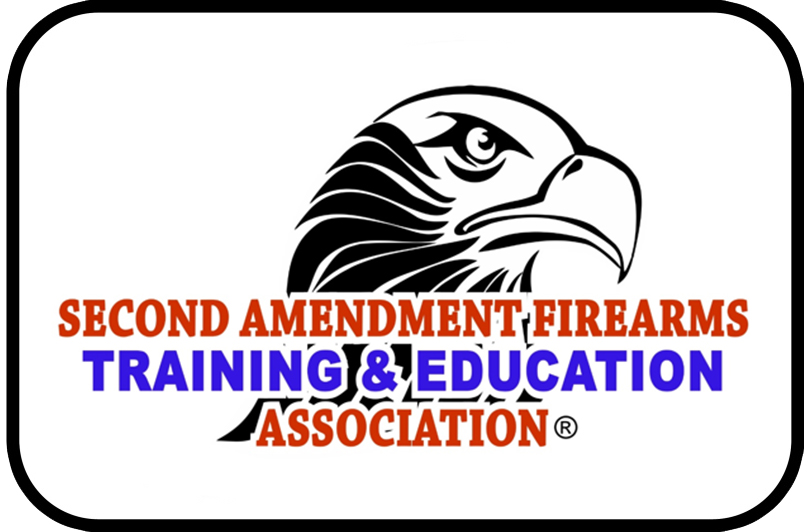 SAF Training Division Instructor Classes
SAF Training Division Instructor Classes
The SAF Training Division Instructor level courses are designed to teach the experienced shooter/instructor, how to present the SAFTD courses to the general public using the SAFTD Methods of Instruction (MOI) as a basis for instructional methods and techniques. These courses also encompasses the proper running of the range portions and the best practices for achieving the maximum amount of learning from the students.
The SAF Training Division Instructor level courses are designed to teach the instructor candidates how to teach the student level course and are not designed to increase skills of the instructor candidates, all instructor candidates must already posses the skills necessary in the discipline they are taking. All instructors candidates are must also meet the following requirements:
- Must posses outstanding firearm handling safety skills
- SAFTD Methods of Instruction MOI / (2 Days)
- Liability Insurance with minimum of 1,000,000 coverage highly recommended
- 3 sealed letters of recommendation.
- 2 page bio on relevant experience and why you would be a good SAFTD Instructor.
- Copy of all previous training, certifications, and licenses.
- SAFTD Range Officer Certification
- First Aid, CPR and AED Certification (National or State recognized organization)-(Must be up to date.)
- Must take and pass the SAFTD Student level class.
- Must be at least 21 years old
- Must be a U.S. Citizens or Legal Permanent Resident with valid immigration card. (ITAR)
- Must speak, write and understand English
- Must be able to legally posses firearms under both Federal and State laws.
Instructors
Local Instructor candidates, must attend SAFTD Methods of Instruction (MOI) and SAFTD Range Officer (RO). To attend an instructor class the instructor candidate must have also attended the student portion of the class they wish to become an instructor in. The instructor candidate must demonstrate proficiency and knowledge before attending an instructor class through a qualification & safety evaluation. Instructor candidates must obtained a 90%+ on the student test and the instructor test. The mission of the SAFTD Instructors is to instruct students using the SAFTD approved syllabus, methods and maintain the standard set forth by SAFTD.
Advanced Instructor (AI)
Must have been a SAFTD Instructor for Minimum one (1) year. In addition must be qualified in Handgun I, Carbine I, Shotgun I and Range Master. Must have taught a total 15 classes as instructor, minimum 10 classes as Lead Instructor, 2 disciplines of each 50 students 90% on written, 90% qualifications. The mission of the SAFTD Advanced Instructor is to instruct students using the SAFTD advanced courses approved syllabus, methods and maintain the standard set forth by the SAFTD.
Senior Instructors (SI)
Must have been an Advanced Instructor for (2) years. In addition hold Handgun I-II Carbine I-II, Shotgun I-II, Precision Rifle and Range Master. Must have taught 30 classes, 20 of those classes must have been as Lead Instructor with a minimum of 100 students. Be submitted by a Master Instructor and passed all tests, interviews with a 95% or better. These Senior Instructors will instruct students using SAFTD approved Handgun I-II Carbine I-II, Shotgun I-II, Precision Rifle and Master Range Officer syllabus, methods and maintain the standard set forth by the SAFTD. They also assist MI in instructor classes.
Master Instructors (MI)
Must have been a SAFTD Senior Instructor, for (2) years be proficient in all fields of training (classroom, shooting and range operations), attended a Master Instructor conference and passed all tests, interviews with a 95% or better. Must have taught 36 classes, 20 of those classes must have been as Lead Instructor with a minimum of 100 students. Must be certified to teach all fields of training. These MI's will instruct students and instructor candidates using SAFTD approved syllabus, methods and maintain the standard set forth by the SAFTD. Sponsored by Regional or National
State Master Instructors (SMI)
Additional duties as MI and must be submitted by Regional MI and approved by National MI. Duties are to monitor and audit all instructors levels including Instructor, AI, SI, MI to check proficiency, ensure courses are being taught to SAFTD syllabus, ethnics etc. The State MI will also handle correspondence from State 2A organizations and help in getting SAFTD Course approved by their state of residence.
Regional Master Instructors (RMI)
Same as State MI, additionally must be approved by National MI and submitted by Regional MI. Regional MI's run and organize Master Instructor Conferences with approval and attendance by a National MI. Some State MI's are Founding National Training Board Members of SAFTD. (They truly wrote the book). Without them this program would not have been possible.
Lead Instructor definition: Instructor in charge of the class, who runs, organizes and reports the class to the SAFTD.
National Master Instructors
Head Quarters, National Executive Board
Revoking of Instructor, SI, AI, MI, RO, MRO status:
Any and all certifications may be revoked for, but not limited to:
- Unsafe acts in the classroom or range
- Ethics violations (Contract you signed)
- Not fulfilling commitments
- Improper behavior resulting in charges or reports to this organization
- Improper use of SAF or SAFTD logos, images, names or property
- Improper training
- Not following the syllabus, outline or class content
- Skipping sections
- Shortening or changing the course work or presentations
- Criminal convictions
- Actions which brings discredit to the SAFTD or its programs.
If your credentials are revoked by a State MI (It will be in writing on an official SAFTD form, you may appeal to your regional MI for a review. Your last course of action is to contact the National MI's. Their decision is final. This process may be completed by email and phone conversations. All outcomes will be sent to the instructor via certified and regular mail.
Complaints will follow this chain of command.
If you see a SAFTD instructor violating any of our rules that would jeopardize the safety of a student or the quality of any SAFTD courses contact your State MI. You must complete the required paperwork and sign it.
Continuing Education & Training
Continuing Education & Training is mandatory for all training levels and will be a once a year, in person (classroom) or computer generated. This training is intended to keep all levels of trainers up to date on changes to classes and organizational policy.
Course Work Updates
SAFTD course work will be updated frequently and at a minimum of once per year as new studies, techniques and changes/corrections are necessary.
Instructor Level Classes are available in the following disciplines:
- Methods of Instruction (MOI)
- Defensive Handgun 1 Instructor
- Defensive Handgun 2 Instructor
- Defensive Carbine 1 Instructor
- Defensive Carbine 2 Instructor
- Defensive Shotgun 1 Instructor
- Defensive Shotgun 2 Instructor
- Precision Rifle Instructor
- Range Master Development Course
- Range Officer
- SAFE - Instructor Development Course
SAFTD Methods of Instruction (MOI)
The purpose of the SAFTD MOI is to introduce the new Instructor Candidate to the teaching methods that SAFTD has adopted, and to instill the teaching methods, policies and procedures, professional ethics, and business models of Second Amendment Foundation Training Division to all instructor candidates.
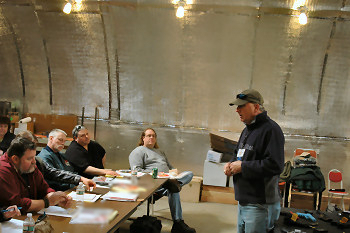 In this two day course you will learn:
In this two day course you will learn:
- MOI Introduction
- SAFTD Organizational information
- Class structure
- Classroom Presentation
- Running a Range
- SAFTD Teaching methods
- SAFTD Ethics
- Teaching a mini class.
- Administrative Information
- SAFTD Rules & Policies
- Class Rules/Edicts
- What is expected of the Instructor Candidate?
- Inappropriate Language
- History of SAF and SAFTD
- Becoming a member of SAF
- Second Amendment Foundation Training Division Membership
- Levels of Instructors
- Revoking/suspending of instructor credentials
- Fields of training
- Visual aids
- Range Etiquette
- Principles of Learning
- Teaching Aids
- Feedback and Assessment
- After Action Reports
- Training Culture
- Situational Awareness
- Teamwork in Training
- Public Speaking
- Dealing with Problem & Dominant Students
- Dealing with Volunteers
- How to keep Volunteers
- Failing a student
- Handicapped students
- Use of SAFTD Trademarks
- Insurance
- Maintaining Training Records
- Reporting Issues
- Advertising
- Social Media Marketing
- Web sites
- Business Standard Operating Procedures
- Media relations
- Sponsors
- Cost analysis of a class
- and More.
SAFTD Defensive Handgun 1 Instructor
The SAFTD Instructor level courses are designed to teach the experienced shooter/instructor, how to present the SAFTD courses to the general public using the SAFTD MOI as a basis for instructional methods and techniques. This course also encompasses the proper running of the range portions of the class and the best practices for achieving the maximum amount of learning from the students.
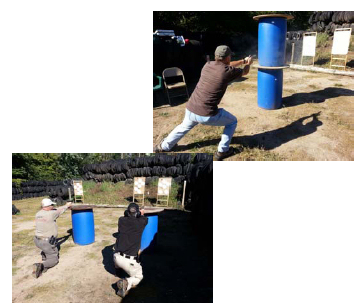 The goal of the Second Amendment Foundation Training Division's “Defensive Handgun 1” course is to provide the student with a solid foundation in basic knowledge of handgun safety, various types of handguns, an understanding of ammunition and how it functions, shooting fundamentals and an introduction to defensive shooting skills.
The goal of the Second Amendment Foundation Training Division's “Defensive Handgun 1” course is to provide the student with a solid foundation in basic knowledge of handgun safety, various types of handguns, an understanding of ammunition and how it functions, shooting fundamentals and an introduction to defensive shooting skills.
A person new to the use of a firearm for personal defense typically has a broad range of questions and is faced with learning a number of skills that are critical in the use of a firearm – in this case a handgun – to defend themselves, their family or someone in their charge. Defensive Handgun 1 is specifically designed to provide a person new to handguns the opportunity to gain that knowledge and learn those skills.
A number of topics will be covered in “Defensive Handgun 1 – Introduction to the Defensive Use of a Handgun”. These include but are not limited to:
 Safe handling of your firearm.
Safe handling of your firearm.- Safe Storage of your firearm and ammunition.
- Basic components of a Double Action Revolver.
- Basic components of a Semi-Automatic Pistol
- Operation of a Double– Action Revolver
- Operation of a Single and a Double Action Semi-Automatic Pistol.
- Working With A Natural Defensive Stance
- 2-Handed and Single Handed Engagements
- Integrating The Color Code Into Your Life
- Finding Your Balance of Speed and Precision
- Clearing Common Pistol Stoppages
- Progressive Shooting Drills
- Definition of Cover and Concealment
- Use of Cover
- Selecting a Pistol and Ammunition
- Cleaning and Maintain your Pistols
Required Equipment
- A modern, serviceable, center-fire handgun
- Ear and Eye protection (electronic muffs preferred).
- Strong Side Holster – For safety reasons on the range our classes will use Strong Side Holsters only! - (No cross draws, shoulder rigs, pocket holsters, ankle, appendix or small of the back carry). Blackhawk Serpa and similar holsters which require the use of the index finger to deactivate a retention device will not be used in SAFTD classes. The ONLY exception is for Law Enforcement & Military who are issued these types of holsters for duty use.
- No pocket guns or holsters such as Keltec PF9, Ruger LCP etc. You will be presenting the gun from concealment and reholstering repeatedly. You need to be proficient at this task and have a holster that does not collapse when the gun is removed.
- Semi-Automatic Pistol or Double Action Revolver .38 special or 9mm or above.
- 150 Rounds of Ammunition: Factory fresh ammo only. NO RELOADS or specialty ammo such as RIP ammo etc.
- Two extra functional magazines (semi-autos) or speed-loaders (revolvers)
- Dual Magazine carrier optional but HIGHLY recommended.
- Comfortable clothing, knee-pads (optional but recommended).
- Hydration system or Bottled water.
- Shoes – comfortable with sufficient support to permit a full range of motion. No sandals or flip-flops.
- Long Pants, Shirt With Higher Collar
- Sturdy Belt
- Baseball Cap
Prerequisites:
- Must posses outstanding firearm handling safety skills
- SAFTD Methods of Instruction MOI within the last 2 years / (2 Days)
- Liability Insurance with minimum of 1,000,000 coverage before your first class
- SAFTD Range Officer Certification
- First Aid, CPR and AED Certification (National or State recognized organization)-(Must be up to date.)
- Must take and pass the SAFTD Student level class.
- Must be at least 21 years old
- Must be a U.S. Citizens or Legal Permanent Resident with valid Green Card. (ITAR)
- Must speak, write and understand English
- Must be able to legally posses firearms under both Federal and State laws.
Course length is a full day, typically 8-10 hours including a 1-hour lunch break. There are short breaks throughout both the classroom session and shooting range drills.
SAFTD Defensive Handgun 2 Instructor
 The goal of the SAF Training Division’s Defensive Handgun 2 Course is to provide the student with an opportunity to build upon the foundational skill-set and knowledge base that was acquired in Defensive Handgun 1. This will include a continued focus on the defensive mindset, and the development of marksmanship and gun handling skills needed to safely and effectively carry a concealed handgun for personal self defense.
The goal of the SAF Training Division’s Defensive Handgun 2 Course is to provide the student with an opportunity to build upon the foundational skill-set and knowledge base that was acquired in Defensive Handgun 1. This will include a continued focus on the defensive mindset, and the development of marksmanship and gun handling skills needed to safely and effectively carry a concealed handgun for personal self defense.
Students will become adept at working with the handgun from the holster, including drawing safely, efficiently, and quickly, and safely re-holstering. You will learn to shoot quickly but accurately, fire multiple shots with full control and will learn to reload the pistol quickly and efficiently using both speed reloads and emergency reloads. Students will learn to shoot effectively with one hand, using the dominant hand and/or the non-dominant hand. We will work on mental conditioning to prepare the student to effectively deal with a sudden threat to their life or the life of another.
Defensive Handgun 2 is designed to help the student quickly develop essential skills that can help him/her prevail in a real lethal force encounters.
Defensive Handgun 2 consists of a full day of intense classroom & range training and instruction covering a variety of topics including, but not limited to:
- Gun Safety Rules and Trigger Finger & Muzzle Discipline
- The importance of the Defensive Mindset
- Review of Defensive Shooting Fundamentals
- Dry fire & Live Fire Exercises
- Presentation from a holster
- Emergency and Speed Reloads
- Fighting stance platform
- Delivering Multiple Shots efficiently and on target
- Trigger Reset
- The IALEFI-QP Silhouette Target
- Introduction to One-Hand Only Presentation and Shooting
Required Gear:
- A modern, serviceable, center-fire handgun (Semi-Automatic Pistol or Double Action Revolver .38 special or 9mm or above.)
- Ear and Eye protection (electronic muffs preferred).
- Strong Side Holster – For safety reasons on the range our classes will use Strong Side Holsters only! - (No cross draws, shoulder rigs, pocket holsters, ankle, appendix or small of the back carry). Blackhawk Serpa and similar holsters which require the use of the index finger to deactivate a retention device will not be used in SAFTD classes. The ONLY exception is for Law Enforcement & Military who are issued these types of holsters for duty use.
- No pocket guns such as Keltec PF9, Ruger LCP etc. You will be presenting the gun from concealment and re-holstering repeatedly. You need to be proficient at this task and have a holster that does not collapse when the gun is removed.
- 175 rounds of Ammunition: Factory fresh ammo only. NO RELOADS, specialty or novelty ammo such as RIP ammo etc.
- Two extra functional magazines (semi-autos - 3 total) or speed-loaders (revolvers)
- Dual Magazine carrier optional but HIGHLY recommended.
- Hydration system or Bottled water.
- Shoes – comfortable with sufficient support to permit a full range of motion. No sandals or flip-flops.
- Long Pants, Shirt With Higher Collar
- Sturdy Belt
- Baseball Cap
Prerequisites:
- Must posses outstanding firearm handling safety skills
- SAFTD Methods of Instruction MOI within the last 2 years / (2 Days)
- Liability Insurance with minimum of 1,000,000 coverage before your first class
- SAFTD Range Officer Certification
- First Aid, CPR and AED Certification (National or State recognized organization)-(Must be up to date.)
- Must take and pass the SAFTD Student level class.
- Must be at least 21 years old
- Must be a U.S. Citizens or Legal Permanent Resident with valid Green Card. (ITAR)
- Must speak, write and understand English
- Must be able to legally posses firearms under both Federal and State laws.
The Defensive Handgun 2 course length is a full day, typically taking 8 – 10 hours including a 1-hour scheduled lunch break. A short break is given after each hour of instruction (approximately).
SAFTD Defensive Carbine 1 Instructor
 The SAFTD Instructor level courses are designed to teach the experienced shooter/instructor, how to present the SAFTD courses to the general public using the SAFTD MOI as a basis for instructional methods and techniques. This course also encompasses the proper running of the range portions of the class and the best practices for achieving the maximum amount of learning from the students.
The SAFTD Instructor level courses are designed to teach the experienced shooter/instructor, how to present the SAFTD courses to the general public using the SAFTD MOI as a basis for instructional methods and techniques. This course also encompasses the proper running of the range portions of the class and the best practices for achieving the maximum amount of learning from the students.
The goal of the Second Amendment Foundation Training Division's “Defensive Carbine 1” Instructor course is to provide the student with a solid foundation in basic knowledge of carbine safety, various types of carbines, an understanding of ammunition and how it functions, shooting fundamentals and an introduction to defensive shooting skills.
A person new to the use of a firearm for personal defense typically has a broad range of questions and is faced with learning a number of skills that are critical in the use of a firearm – in this case a Carbine – to defend themselves, their family or someone in their charge. Defensive Carbine 1 is specifically designed to provide a person new to carbines the opportunity to gain that knowledge and learn those skills.
A number of topics will be covered in “Defensive Carbine 1 - Introduction to the Defensive Use of a Carbine. These include but are not limited to:
- Safe handling of your firearm.
- Safe Storage of your firearm and ammunition.
- Basic components of a Carbine
- Types and Operation of various Carbines.
- Working With A Natural Defensive Stance
- Integrating The Color Code Into Your Life
- Finding Your Balance of Speed and Precision
- Clearing Common Stoppages
- Progressive Shooting Drills
- Definition of Cover and Concealment
- Use of Cover
- Shooting From Low and High Barricades
- Selecting a Carbine and Ammunition
- Cleaning and Maintain your Carbines
Required Equipment:
- A modern, serviceable, semi-auto carbine.
- Ear and Eye protection (electronic muffs preferred).
- Sturdy Shoes, Long Pants, Shirt With Higher Collar
- Ammunition: Factory fresh ammo only. NO RELOADS or specialty ammo.
- Extra magazine carrier
- Comfortable clothing, knee-pads (optional but recommended).
- Hydration system or Bottled water.
- Baseball Cap
Prerequisites:
- Must posses outstanding firearm handling safety skills
- SAFTD Methods of Instruction MOI within the last 2 years / (2 Days)
- Liability Insurance with minimum of 1,000,000 coverage before your first class
- SAFTD Range Officer Certification
- First Aid, CPR and AED Certification (National or State recognized organization)-(Must be up to date.)
- Must take and pass the SAFTD Student level class.
- Must be at least 21 years old
- Must be a U.S. Citizens or Legal Permanent Resident with valid Green Card. (ITAR)
- Must speak, write and understand English
- Must be able to legally posses firearms under both Federal and State laws.
SAFTD Defensive Carbine 2 Instructor
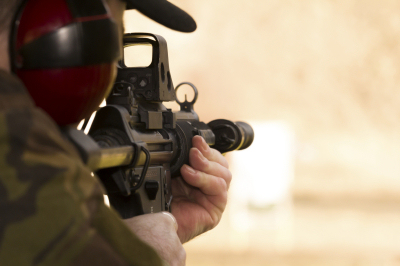 The SAFTD Instructor level courses are designed to teach the experienced shooter/instructor, how to present the SAFTD courses to the general public using the SAFTD MOI as a basis for instructional methods and techniques. This course also encompasses the proper running of the range portions of the class and the best practices for achieving the maximum amount of learning from the students.
The SAFTD Instructor level courses are designed to teach the experienced shooter/instructor, how to present the SAFTD courses to the general public using the SAFTD MOI as a basis for instructional methods and techniques. This course also encompasses the proper running of the range portions of the class and the best practices for achieving the maximum amount of learning from the students.
The goal of the Second Amendment Foundation Training Division’s Defensive Carbine 2 Course is to provide the student with an opportunity to build upon the foundational skill-set and knowledge base that was acquired in Defensive Carbine 1. This will include a continued focus on the defensive mindset, discussion regarding avoidance/deescalation strategies, an understanding of the physiological changes that occur in the human body when under lethal force stress and what affect they have on our training, and a series of skill development exercises that will help the student learn to more efficiently and effectively use a carbine for self defense in a lethal force encounter.
Defensive Carbine 2 is not a “marksmanship” or “target shooting” course. Rather it is designed to help the student quickly develop essential skills that can help him/her prevail in a real lethal force encounter.
Defensive Carbine 2 consists of a full day of intense range training and instruction covering a variety of topics including, but not limited to:
- Avoidance and deescalation strategies
- The importance of the Defensive Mindset
- Physiological changes that occur when under severe stress
- Review of Defensive Shooting Fundamentals
- Defensive Accuracy Concept
- Volume of Fire
- Using lateral movement
- Presentation of the Carbine
- Emergency and Tactical Reloads
- Proper Scan and Assess procedure
- Malfunction Clearing Remedies
- Engaging Multiple Targets
- Moving to Cover and/or Concealment
- Application of learned skills under realistic conditions
Required Gear:
- A modern, serviceable carbine
- Ear and Eye protection (electronic muffs preferred).
- Sturdy Shoes, Long Pants, Shirt With Higher Collar
- Comfortable clothing, knee-pads (optional but recommended).
- Hydration system or Bottled water.
- Baseball Cap
Prerequisites:
- Must posses outstanding firearm handling safety skills
- SAFTD Methods of Instruction MOI within the last 2 years / (2 Days)
- Liability Insurance with minimum of 1,000,000 coverage before your first class
- SAFTD Range Officer Certification
- First Aid, CPR and AED Certification (National or State recognized organization)-(Must be up to date.)
- Must take and pass the SAFTD Student level class.
- Must be at least 21 years old
- Must be a U.S. Citizens or Legal Permanent Resident with valid Green Card. (ITAR)
- Must speak, write and understand English
- Must be able to legally posses firearms under both Federal and State laws.
The Defensive Carbine 2 course length is a full day, typically taking 8 – 10 hours including a 1-hour scheduled lunch break. A short break is given after each hour of instruction (approximately).
SAFTD Defensive Shotgun 1 Instructor
The SAFTD Instructor level courses are designed to teach the experienced shooter/instructor, how to present the SAFTD courses to the general public using the SAFTD MOI as a basis for instructional methods and techniques. This course also encompasses the proper running of the range portions of the class and the best practices for achieving the maximum amount of learning from the students.
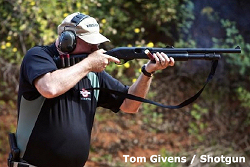 The goal of the Second Amendment Foundation Training Division's “Defensive Shotgun 1” course is to provide the student with a solid foundation in basic knowledge of shotgun safety, various types of shotgun, an understanding of ammunition and how it functions, shooting fundamentals and an introduction to defensive shooting skills.
The goal of the Second Amendment Foundation Training Division's “Defensive Shotgun 1” course is to provide the student with a solid foundation in basic knowledge of shotgun safety, various types of shotgun, an understanding of ammunition and how it functions, shooting fundamentals and an introduction to defensive shooting skills.
A person new to the use of a firearm for personal defense typically has a broad range of questions and is faced with learning a number of skills that are critical in the use of a firearm – in this case a shotgun – to defend themselves, their family or someone in their charge. Defensive Shotgun 1 is specifically designed to provide a person new to shotguns the opportunity to gain that knowledge and learn those skills.
A number of topics will be covered in “Defensive Shotgun 1 - Introduction to the Defensive Use of a Shotgun. These include but are not limited to:
- Safe handling of your firearm.
- Safe Storage of your firearm and ammunition.
- Basic components of a shotgun
- Types and Operation of shotguns including pump, semi-automatic, break-open, etc.
- Working With A Natural Defensive Stance
- Integrating The Color Code Into Your Life
- Finding Your Balance of Speed and Precision
- Clearing Common Stoppages
- Progressive Shooting Drills
- Definition of Cover and Concealment
- Use of Cover
- Shooting From Low and High Barricades
- Selecting a Shotgun and Ammunition
- Cleaning and Maintain your Shotguns
Required Equipment
- A modern, serviceable shotgun, (pump or semi-auto shotgun recommended) in 12, 16 or 20 gauge
- Ear and Eye protection (electronic muffs preferred).
- Sturdy Shoes, Long Pants, Shirt With Higher Collar
- Ammunition: Factory fresh ammo only. NO RELOADS or specialty ammo.
- 50 shells (7 1/2 or #8 shot) and 25 shells that are #5 shot.
- Shotshell carrier (either weapon mounted, belt or shotshell pouch)
- Comfortable clothing, knee-pads (optional but recommended).
- Hydration system or Bottled water.
- Baseball Cap
Prerequisites:
- Must posses outstanding firearm handling safety skills
- SAFTD Methods of Instruction MOI within the last 2 years / (2 Days)
- Liability Insurance with minimum of 1,000,000 coverage before your first class
- SAFTD Range Officer Certification
- First Aid, CPR and AED Certification (National or State recognized organization)-(Must be up to date.)
- Must take and pass the SAFTD Student level class.
- Must be at least 21 years old
- Must be a U.S. Citizens or Legal Permanent Resident with valid Green Card. (ITAR)
- Must speak, write and understand English
- Must be able to legally posses firearms under both Federal and State laws.
Course length is a full day, typically 8-10 hours including a 1-hour lunch break. There are short breaks throughout both the classroom session and shooting range drills.


 The SAFTD Instructor level courses are designed to teach the experienced shooter/instructor, how to present the SAFTD courses to the general public using the SAFTD MOI as a basis for instructional methods and techniques. This course also encompasses the proper running of the range portions of the class and the best practices for achieving the maximum amount of learning from the students.
The SAFTD Instructor level courses are designed to teach the experienced shooter/instructor, how to present the SAFTD courses to the general public using the SAFTD MOI as a basis for instructional methods and techniques. This course also encompasses the proper running of the range portions of the class and the best practices for achieving the maximum amount of learning from the students.
 The SAFTD Instructor level courses are designed to teach the experienced shooter/instructor, how to present the SAFTD courses to the general public using the SAFTD MOI as a basis for instructional methods and techniques. This course also encompasses the proper running of the range portions of the class and the best practices for achieving the maximum amount of learning from the students.
The SAFTD Instructor level courses are designed to teach the experienced shooter/instructor, how to present the SAFTD courses to the general public using the SAFTD MOI as a basis for instructional methods and techniques. This course also encompasses the proper running of the range portions of the class and the best practices for achieving the maximum amount of learning from the students.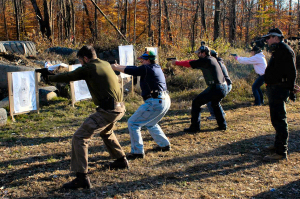 The goal of the Second Amendment Foundation Training Division's “Range Master” course is to provide the Certified Range Officers with a solid foundation in basic knowledge of range management and operations. This is a two day class.
The goal of the Second Amendment Foundation Training Division's “Range Master” course is to provide the Certified Range Officers with a solid foundation in basic knowledge of range management and operations. This is a two day class. Listed below is a brief description of the course topics that will be covered.
Listed below is a brief description of the course topics that will be covered.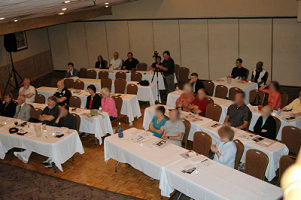 Introduction
Introduction

